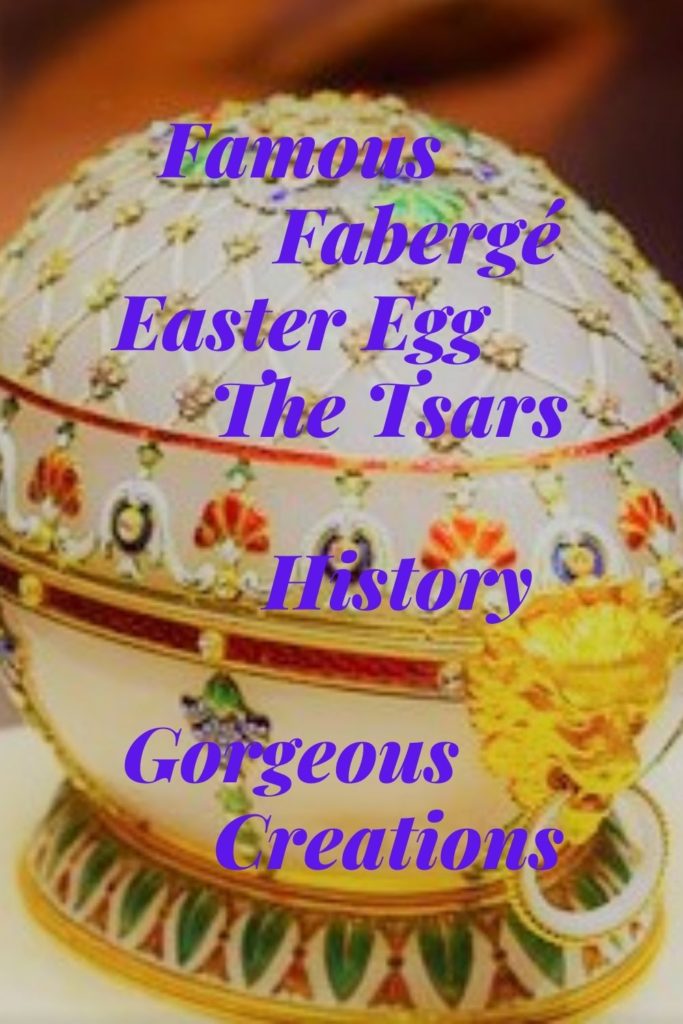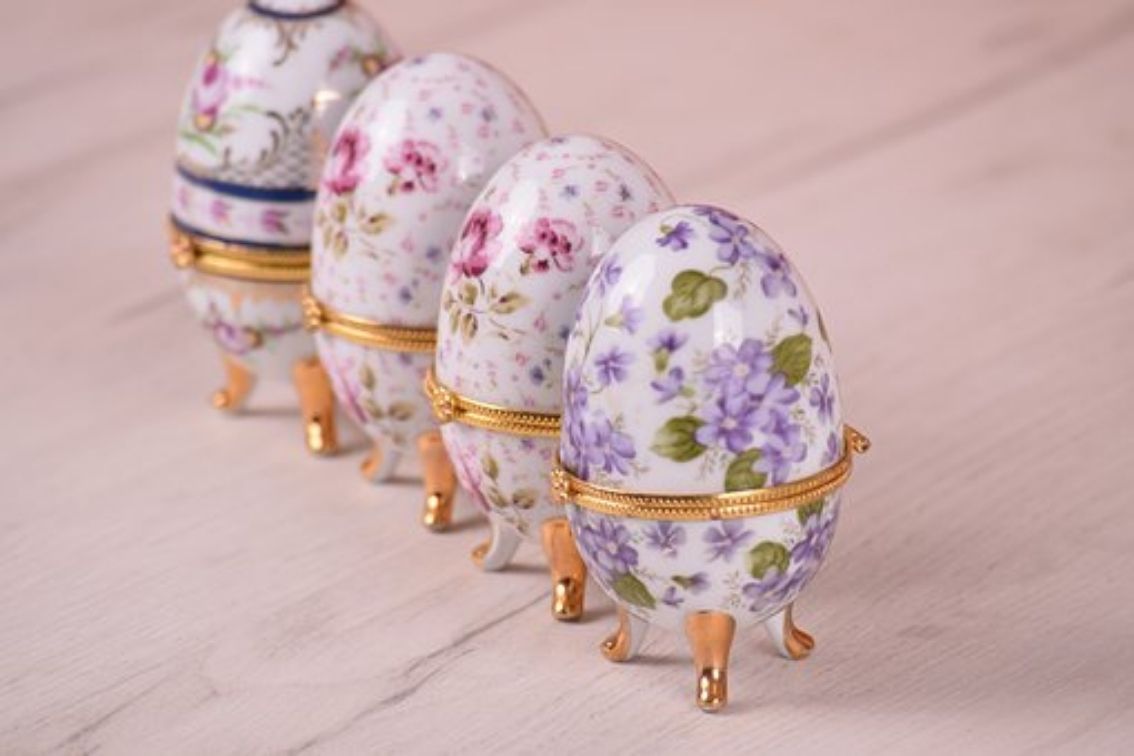*This post may contain affiliate links for which I earn commissions.*
The history of Faberge’s eggs is very interesting, it started in the Romanov family in 1885, when the Tsar, Alexander the third, ordered an Easter Egg for his wife, from the beginning there was a small gift inside the egg, and even the Tsar didn’t know what was.

Fabergé was a master goldsmith succeeding his father in 1882, and he was to follow the royal family until 1917 the year before the Romanov family was executed.
Fabergé showed superior craftsmanship in his trade and creation so he was soon given “free-hands” for the yearly egg, and no 2 eggs were in any way similar, both on the outside and inside the variations from year to year, and they would all have a personal and meaningful surprise to the recipient.
The Romanov’s’ egg started with Tsar Alexander the 3rd in 1885, and when his son, Nicholas the second, succeeded him in 1894 the tradition went on though now it was 2 eggs a very year and it lasted into 1903, then 1904 and 1905 were excepted due to the war, and the tradition was reinstalled in 1906 until 1917, in that year Fabergé was supposed to deliver 2 eggs but the February revolutions came on and that was the end of the Easter Eggs, as the Tsar and his family were executed the following year.
When Alexander died and Nicholas succeeded, he brought the tradition with the Easter Egg forward, so not only did his wife get an egg but his widowed mother got an egg as well.
Fabergé made 50 eggs all together during the years, and none were alike, and all of them with a secret inside like a gemstone, pendant or like in 1897 to his wife the Russian empress, a miniature golden carriage which they had used for the Imperial Coronation, mind you it toke more than one year to make with all the small details other eggs were with music.
It is not knowing where all the Fabergé eggs are now, though most of them are to be seen in a Museum somewhere mostly in Europe, still, 8 of the eggs are missing, and no one knows exactly their whereabouts, I will only name one place where you can see the eggs and that is the Fabergé Museum in St. Petersburg where 9 of the egg are on display.
Looking for a cute egg

I have only seen some of the dub-like of the eggs and I find them gorgeous, adorable and so unique and what a great story there goes with them, each egg has its own telling for the women in question and of the history of Russia, I’m sure those women have treasured them year after year.
Fabergé left Russia but he got the name with him and over the decades it was used for a range of products, but in 2007 The Fabergé Limited was completed and the production of jewelry was installed. Fabergé died in 1920.
Two Fabergé eggs have been made after the Russian Revolution in 1917; the first one on the request of Hussein Ibrahim Al-Farrand in Qatari in 2015, it was made from mother-of-pearl and decorated with 139 white pearls and a unique 12,17-carat natural gray pearl and 3305 diamonds.
Another one was created in 2018 in a collaboration with Rolls-Royce and Fabergé a unique “Spirit of Ecstasy” Egg.
Did you know that the Brut cologne was launched by Fabergé? I didn’t before now.

